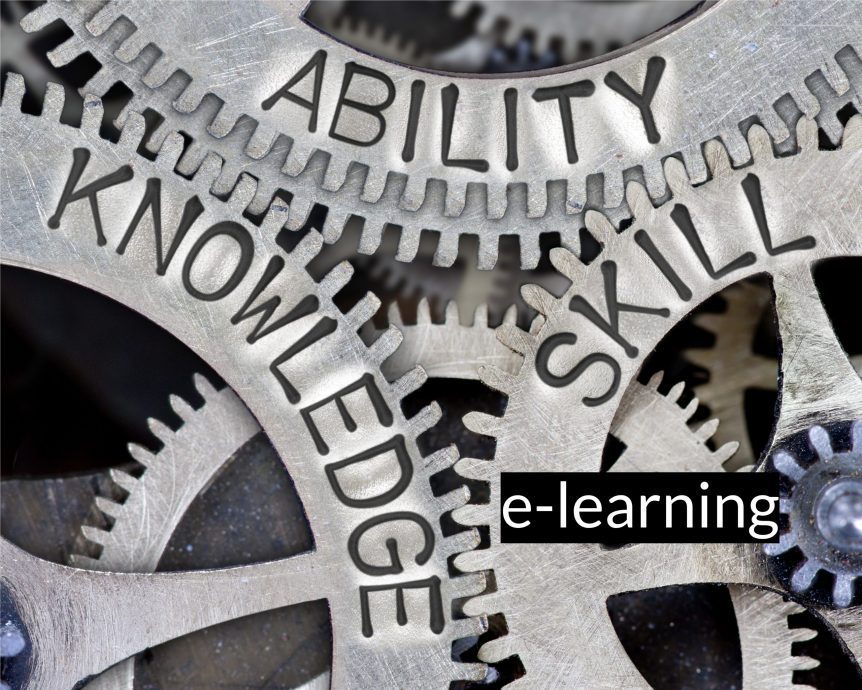Identifying Knowledge and Skills Gaps in Your Organisation – What & Why
Knowledge and skills gaps in your business affect performance. This could be performance in relation to customer service levels, risk management, profitability, competitiveness, or any other metric that is important to your business. Therefore, identifying knowledge and skills gaps is essential, as is dealing with those gaps.In this three-part blog series, we’ll first look at the existence of knowledge and skills gaps, explaining what they are and why you need to be aware of them.
In part two of the series, we’ll explain the process for identifying knowledge and skills gaps in your organisation.
Finally, in the third blog of the series, we’ll outline the next steps you should take, including developing e-learning courses, once you have an understanding of the gaps you need to bridge.
The Distinction Between Knowledge and Skills Gaps
Understanding the difference between knowledge and skills gaps is important, particularly when you get to the point of developing strategies to bridge the gaps.
A knowledge gap is something that the learner could put to immediate use once they understand the concept or information.
A skills gap, on the other hand, requires practice by the employee before it can be properly put to use, and before tangible improvements are made. How much practice will depend on the complexity of the skill.
It is also important to remember there could be another “gap” impacting productivity and performance in your business. It is the motivation gap, and it is very different from knowledge or skills gaps.
With a motivation gap, employees will have the knowledge or skills that your business needs, but they do not put them to proper use. Your approach for dealing with a motivation gap will be different from the strategies you can use to bridge knowledge and skills gaps.
Why Identifying and Bridging Knowledge & Skills Gaps Is Important
Identifying knowledge and skills gaps won’t, in isolation, improve your business. So, why should you go through the process? It will take time and resources, so what are the benefits, and what can you expect in return?
The following seven benefits are the key reasons why identifying knowledge and skills gaps is an important step your business should take.
-
Understand the Barriers that Can or Will Prevent Your Business from Achieving Its Goals
Your business will not achieve its objectives and goals if you don’t have the right people in the right place with the right level of skills, knowledge, and motivation.
After all, business history is littered with examples of failed initiatives that could have been successful if only employees were better equipped and prepared.
This point is even more applicable to business objectives or realities that are challenging or disruptive.
Automation is one example of the above. Automation delivers and will continue to deliver significant benefits to businesses. Too often, though, automation is only viewed through the prism of headcount reductions or redeployments. However, for automation to fully work and deliver on its potential, your business is likely to need different knowledge levels and skillsets from what you have now.
Going through the process of identifying knowledge and skills gaps will highlight areas like this that need to be improved.
-
Improve business performance
By ensuring your employees have the knowledge and skills that your business needs, you can improve performance in multiple areas of your business, from those that are underperforming to those that are performing well but could do better.
-
Maximises the potential of existing employees
Helping your employees reach their full potential (in-line with the needs of your business, of course) will make it easier for you to achieve targets, goals, and objectives. You can do this by first identifying the areas where they are lacking and then bridging those gaps, both at a team and individual level.
This ties into the previous point, i.e., performance levels in your business will improve when your team operates at an optimum level.
-
Improve staff morale and motivation
When employees have the knowledge and skills that they need to do the job, they will be happier with higher levels of motivation. They will feel greater levels of job satisfaction too.
-
Reduce staff turnover
Happy and motivated staff who feel they are reaching their full potential and are valued in the business are less likely to leave for a different opportunity. This reduces recruitment and training costs, maintains consistency with customers and teams, and ensures you hold on to good people rather than them moving to a competitor and bringing with them all the experience and knowledge you have invested.
-
Helps the recruitment process
Reducing staff turnover helps the recruitment process as your team in the UAE and Saudi Arabia will be more stable.
However, identifying knowledge and skills gaps has another benefit for your HR department. When you know the knowledge and skills that your business needs, your recruitment team can create better job descriptions and recruitment strategies. This will improve the standard of candidates they consider and ultimately recruit.
-
Improves productivity
Productivity levels drop when employees don’t know what they are doing or are not very good at performing a particular task. By identifying where knowledge and skills gaps exist, and then making improvements, productivity levels will increase.
How Do You Identify Knowledge and Skills Gaps – And What Do You Do Next?
So, in summary, identifying knowledge and skills gaps in your business is essential to ensuring you achieve maximum levels of performance and to ensure your business is fully prepared for the future.
We’ll look at the process for identifying knowledge and skills gaps in our next blog, followed by looking at the e-learning strategies and other things you can do when you have this understanding.
